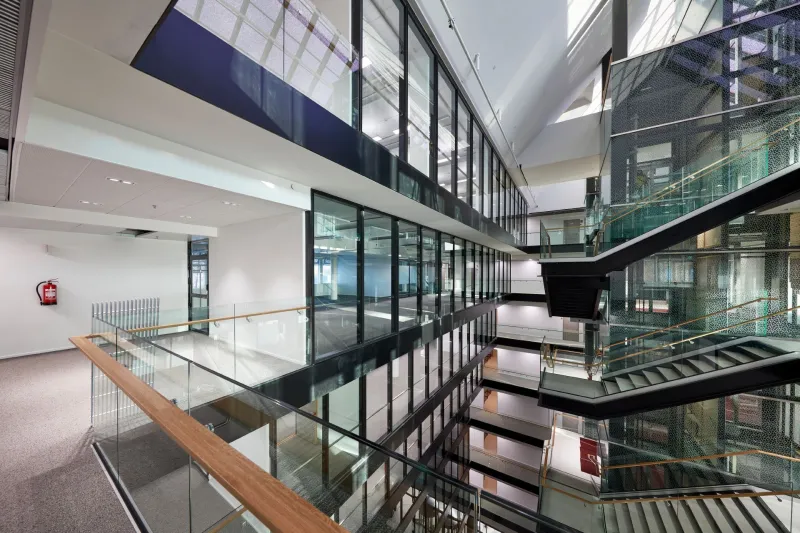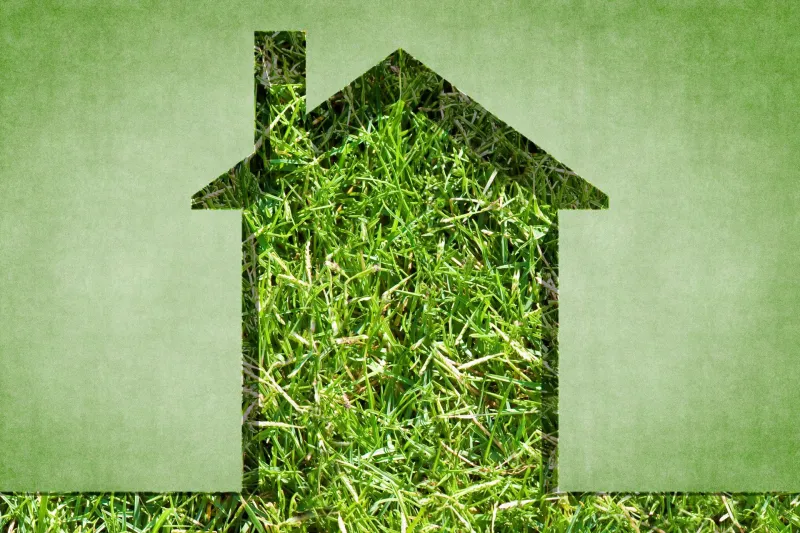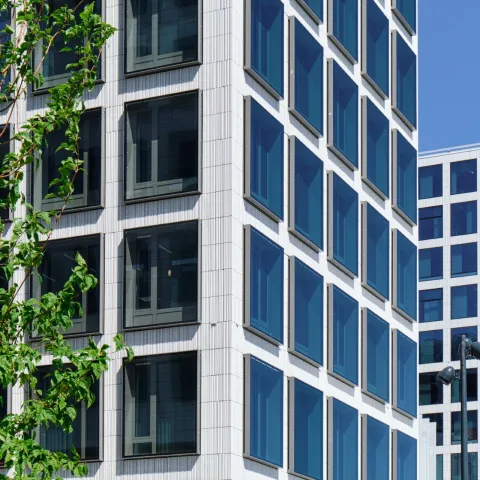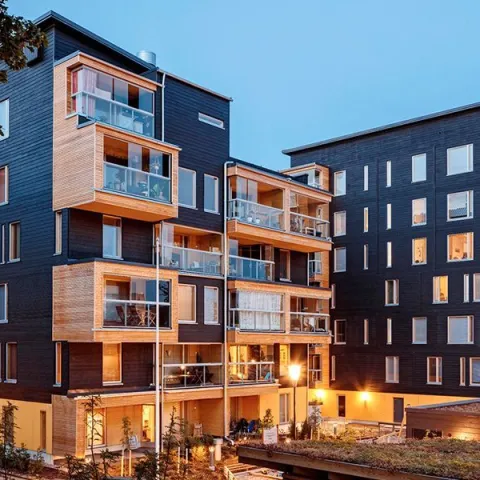LEED and BREEAM as methods to assess a green building
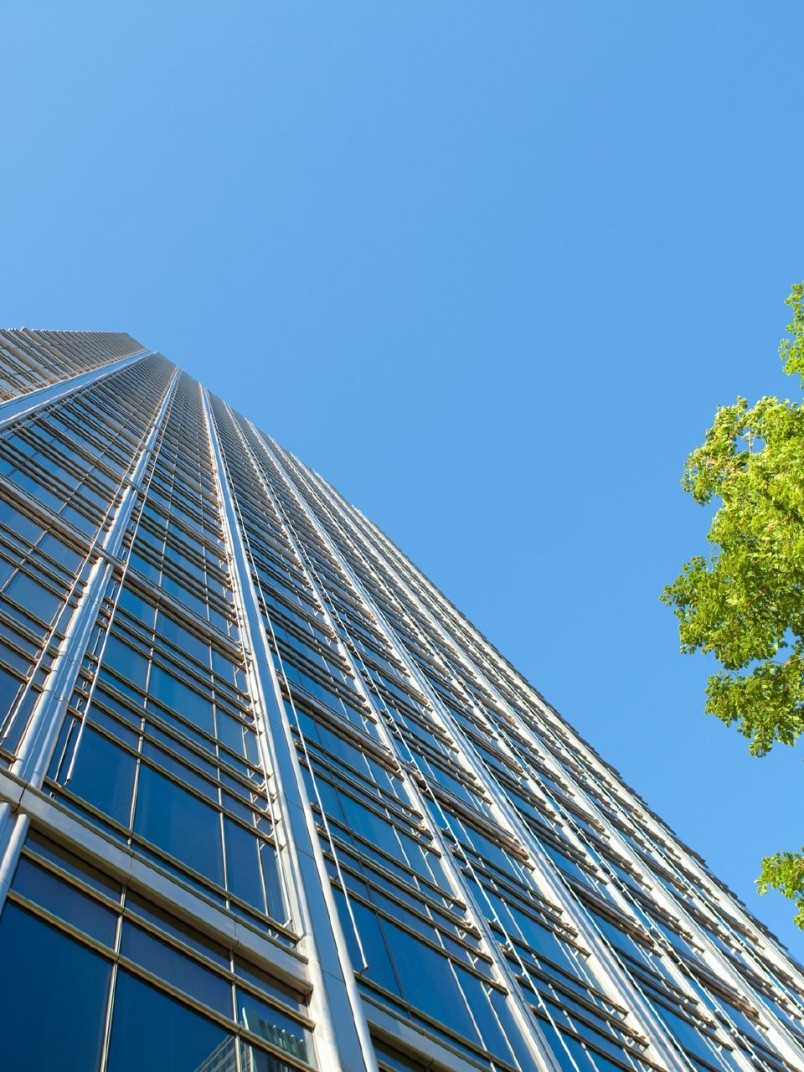
Environmental certifications are tools for standardizing the assessment process of the environmental and health impact of buildings. What are the key differences between LEED and BREEAM certification systems, and what criteria should be considered when choosing paints in the design phase of a green building?
Green building certifications are increasingly important for any building as they indicate that a high level of attention has been paid on the environmental and health impact. Classifications provide universal criteria and easily comparable information. However, the focus and requirements of the certification systems are not identical.
There are differences in the popularity of green building certifications preferred in different markets and parts of the world. This article will focus on two commonly used green building certifications that are universally acknowledged.
LEED and BREEAM in a nutshell
Both LEED and BREEAM certifications are suitable for any types of buildings, including but not limited to office buildings, schools, hospitals, malls, and residential buildings. The main focus of both LEED and BREEAM classification systems is on environmental aspects; thus, areas such as land use, energy use and water use are considered. Both systems pay emphasis of approximately 30 per cents on social aspects as well.
LEED (Leadership in Energy and Environmental Design) is the most widespread environmental classification on a global scale. It was developed in 1993 by the U.S. Green Building Council. In order to attain a LEED certificate, the project team collects all the needed documentation and delivers the data to the U.S. Green Building Council for assessment. Therefore, LEED is often preferred in new building projects where the information can be gathered from the very beginning. The rating scale includes four classes: Certified, Silver, Gold, and Platinum.
BREEAM (Building Research Establishment Environmental Assessment Method) was developed by Building Research Establishment (BRE) in the UK in 1990, and it is the leading environmental assessment method in Europe. As an example, out of all the buildings that have a green building certificate in Poland, 75 per cents have BREEAM certificate whereas 20 per cents have LEED certificate. Examination is conducted by licensed BREEAM assessors, after which the certificate is issued by BRE. The rating scale includes five classes: Pass, Good, Very good, Excellent, and Outstanding.
Another increasingly popular certification system is the WELL Building Standard developed by the International WELL Building Institute (IWBI). WELL has many standards in common with LEED. The main focus of WELL is on the social dimension of buildings, meaning that emphasis is paid on aspects such as social spaces, lighting, water quality.
Categories included in the evaluation process for LEED and BREAAM certification are
LEED
- Land use
- Water use
- Energy use and emissions
- Materials and construction resources
- Interior spaces and innovative design
BREEAM
- Project management
- Energy use
- Health and wellbeing
- Transport
- Water use
- Material use
- Waste treatment
- Land use and impact on immediate surroundings
- Pollution
Paints are a cost-effective way to contribute to a greener building
In both LEED and BREEAM certifications, considerable emphasis is paid on paints and coatings. As much as 27 per cents of the points that can be received in LEED are related to surface treatment materials. Given that building paints contribute to approximately up to 2 per cents of the total cost of a building project, the choice of suitable paints is one of the most cost-effective ways to earn points needed for certification.
Choosing suitable products in the design phase
One of the goals of environmental certificate programs is to reduce chemical emissions that can cause damage for health, air quality, and environment. The classifications set limit values for the emission of VOC (>1,0 g/ltr), formaldehyde and phenols.
It is advisable to choose paints that are compatible with green building certificates in the early phases of the design process. The choice of paints is made by the project team in the context of each building; the organizations issuing the certifications do not endorse specific products. Therefore, awareness of the environmental impact of paints is required of those involved in the design process.
EPD provides transparent data about the product
Environmental Product Declarations, EPDs, provide objective and transparent data about the environmental performance of a product. See all Tikkurila’s EPD verified products here.
Also, other relevant certifications to look for are eco-certificates and M1-certificates.
Tikkurila paints are eco-certified and M1-certified, which guarantees that any levels of emissions and odours are extremely low, making them excellent for usage in LEED and BREEAM certified buildings. Read more about M1 certification in our article and see all Tikkurila's M1 approved products here.
Paint can get credits in environmental classification
But what are the areas in LEED and BREEAM where the paint can contribute to get the credits?
LEED is organized to promote action in key areas, known as credit categories. The areas where the paint can get the credits are Indoor Environmental Quality, Sustainable Sites, Materials and Resources, and Regional Priority (RP) credits.
In Indoor Environmental quality credits Low-Emitting Materials intending to reduce concentrations of chemical contaminants that can damage air quality, human health, productivity, and environment can give up to 3 points. Whereas heat Island Reduction aiming to minimize the negative impact of heat islands on the microclimate and habitats of humans and animals can bring up to 2 points.
A Regional priority credits to provide an incentive for the achievement of credits that address geographical specific environmental, social equity, and public health priorities can give up to 4 points. In Materials And Resources credit category a Building Product Disclosure and Optimization – EPD gives up to 2 points, aiming to promote the use of materials and products for which life-cycle data are available and that benefit environmental, economic and human characteristics. Rewarding design teams for using materials from manufacturers who have verified improvements to their overall lifecycle performance.
On the contrary, BREEAM consists of environmental sections and assessment issues. In the Health and wellbeing section within Indoor air quality issue ‘Emissions from building products’ aiming to recognise and encourage a healthy internal environment through the specification and installation of appropriate ventilation, equipment and finishes, can give up to 2 points.
Furthermore, in the environmental section of Materials the assessment issue of Life cycle impacts the ‘Environmental product declarations’ intending to recognise and encourage the use of robust and appropriate life cycle assessment tools and consequently the specification of construction materials with a low environmental impact (including embodied carbon) over the full life cycle of the building, can give up to 2 points as well.
The table below shows where the points can be achieved in both certifications.
LEED v4
| Category | Indoor Environmental quality credits - Low-Emitting Materials | Sustainable Sites Credits - Heat Island Reduction | Regional priority | Materials And Resources Credit - Building Product Disclosure and Optimization – EPD |
| Points | up to 3 | up to 2 | up to 4 | up to 2 |
| Intent | To reduce concentrations of chemical contaminants that can damage air quality, human health, productivity, and environment. | Minimizing the negative impact of heat islands on the microclimate and habitats of humans and animals. | To provide an incentive for the achievement of credits that address geographical specific environmental, social equity, and public health priorities. |
Promote the use of materials and products for which life-cycle data are available and that benefit environmental, economic and human characteristics. Rewarding design teams for using materials from manufacturers who have verified improvements to their overall lifecycle performance. |
BREEAM International New Construction 2016
| Category | Hea 02 Indoor air quality - Emissions from building products | Mat 01 Life cycle impact - Environmental product declarations |
| Points | up to 2 | up to 2 |
| Intent | To recognise and encourage a healthy internal environment through the specification and installation of appropriate ventilation, equipment and finishes. | To recognise and encourage the use of robust and appropriate life cycle assessment tools and consequently the specification of construction materials with a low environmental impact (including embodied carbon) over the full life cycle of the building. |
Want to learn more and get access to exclusive information?
Feed your creativity with latest trends and grow your know-how about surface treatment solutions. Join Tikkurila Pro Designer - a new arena for creative minds in architecture and interior design.
